How to Move an Outlet Up a Wall (8 Steps)
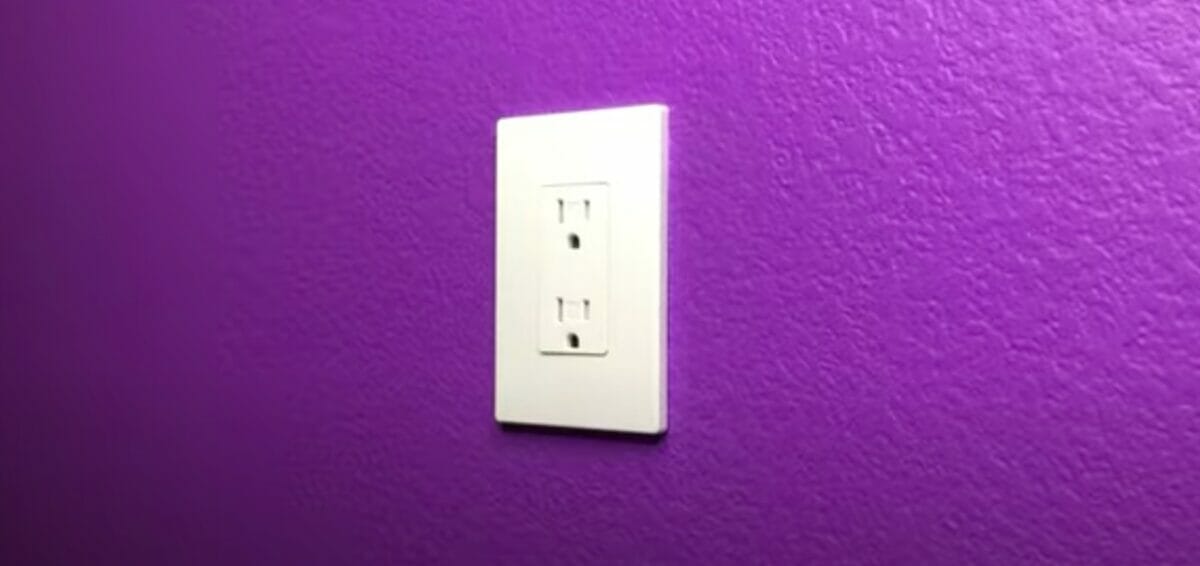
If one of your outlets is too low, you can easily move it up.
You’re not stuck with a low outlet. You don’t have to keep bending down to use it or put a young child at risk. If the low position is putting someone at risk or doesn’t comply with the NEC code, this is how you move it up:
Quick Summary: Disconnect the power. If the wire is coming from above, open and remove the outlet, mark out and make space at the new position by cutting out the wall, pull the wire from that new position, set the box, and reattach the wires and cover plate. Don’t forget to cover the old hole.
I’ll show you how to move an outlet up a wall in detail.
Why You May Need to Move an Outlet Up a Wall
You would need to move an outlet up a wall in these situations:
- The outlet puts a child at risk who is keen to poke their finger inside.
- You must bend down often to use that outlet, which hurts your back.
- You’ve placed a piece of new furniture and need the outlet above it.
- The outlet is too low for your new media wall.
- The outlet’s position doesn’t comply with the NEC code. For example, if it’s below 18” from the floor.
- You’re doing renovation work and need the outlet to be a bit higher.
- You moved into a new home, and the outlet is too low for your need.
Whatever the reason, moving an outlet up is not that difficult.
Required Tools
You’ll need the following tools to move an outlet up:
- Pencil
- Cutter (or drywall saw)
- Screwdriver
- Pliers
- Power drill
- Hammer
- Wire cutters
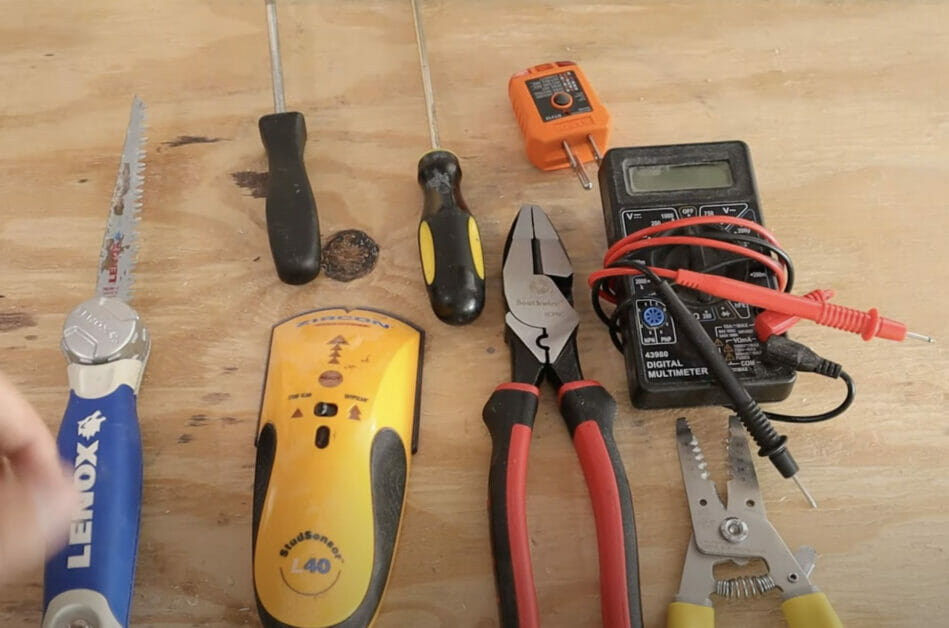
Since you’re moving the same outlet higher on the same wall, we don’t need a new box or outlet (unless the existing one is broken). You probably don’t need new wire either because you can cut the existing wire short.
But if you need, note how the wiring has been done in the existing outlet because you will need to remove the wires, then wire it back the same way.
Also, you should repair the wall at the old location after the outlet has been removed from there. You don’t want to be left with a hole in the wall. So, be prepared to repair the wall afterward, or you can cover it up with something.
Moving an Outlet Up a Wall
Step 1: Disconnect the Power
Switch off the circuit breaker that controls the circuit on which the outlet to be moved is placed.
Using an electrical tester, you can double-check to ensure there is no power.
Step 2: Open and Remove the Outlet
With the power disconnected, open the existing outlet, remove the wires connected to it, and completely remove it.
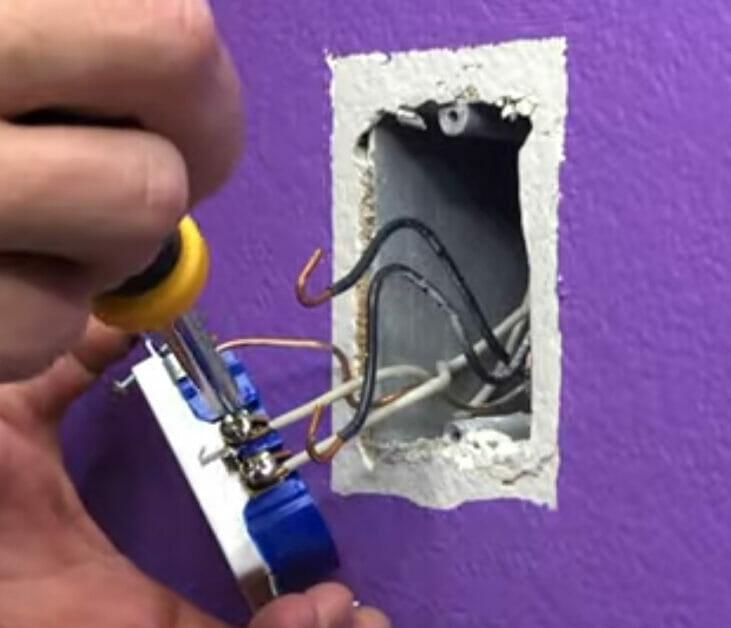
Step 3: Mark and Cut the New Spot
Now, create the outline for the new spot and cut it out.
Hold the electrical box against the wall and outline using a pencil.
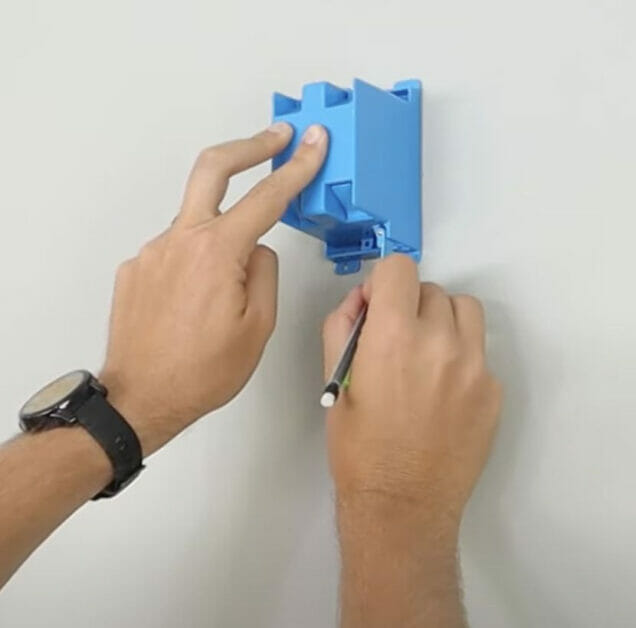
If you’re moving the outlet to a position directly above the existing one, you probably don’t need to worry about the stud locations. Otherwise, ensure the new spot is at least a few inches away from a stud.
Then, carefully cut along the outline using a cutter or drywall saw.
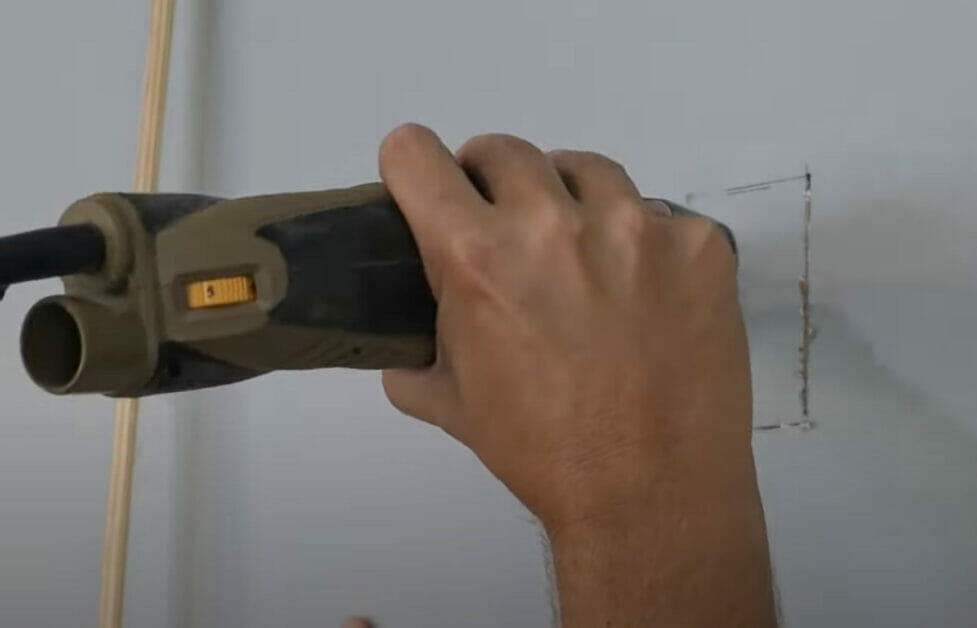
Step 4: Pull the Wire
Pull the wire up at the new spot away from the old one.
As the wire is longer than you need, you can either tuck the extra length behind it or cut it. You only need about 12” out from the wall.
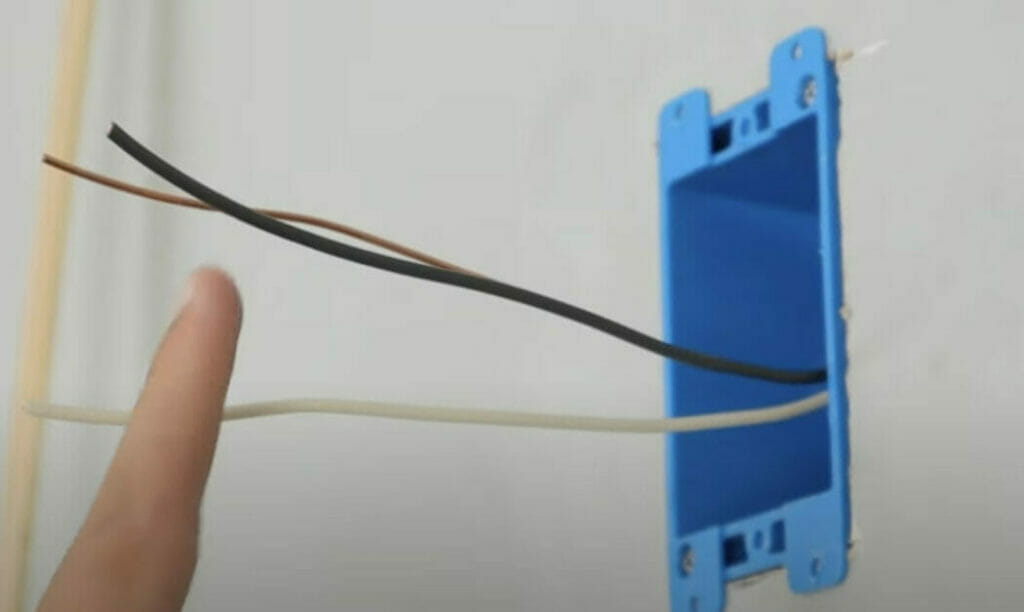
Step 5: Set the Box
Feed the wire through the hole at the back of the box and set the box into place.
Then, secure the box by screwing it into the wall. Make sure the front is flush with the wall.
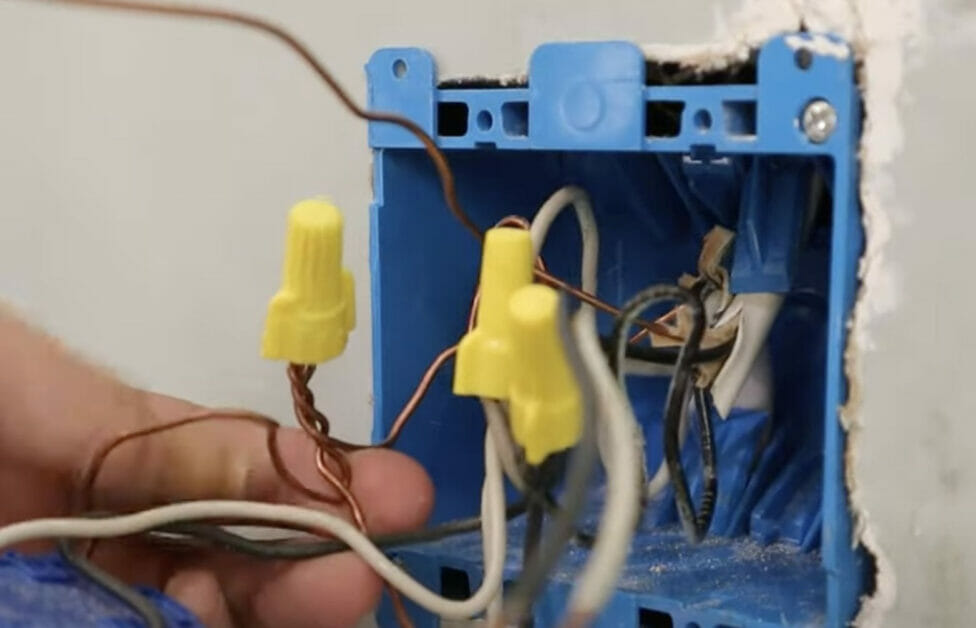
Step 6: Reattach the Wires
Proceed to reattach the wires to the outlet.
The black (hot) wire connects to the bronze terminal (short slot), the white wire to the silver terminal (long slot), and the bare copper wire to the green terminal (round slot). It should be exactly how it was connected before.
Use wire nuts to connect the same wires.
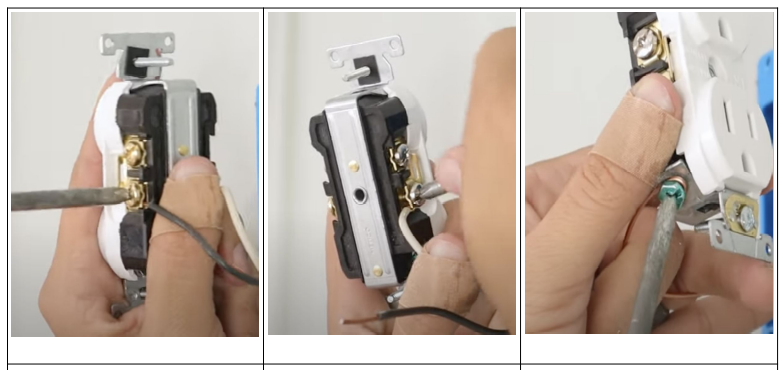
Step 7: Attach the Cover plate
When all the wiring is done, screw the outlet into place, and attach the cover plate.
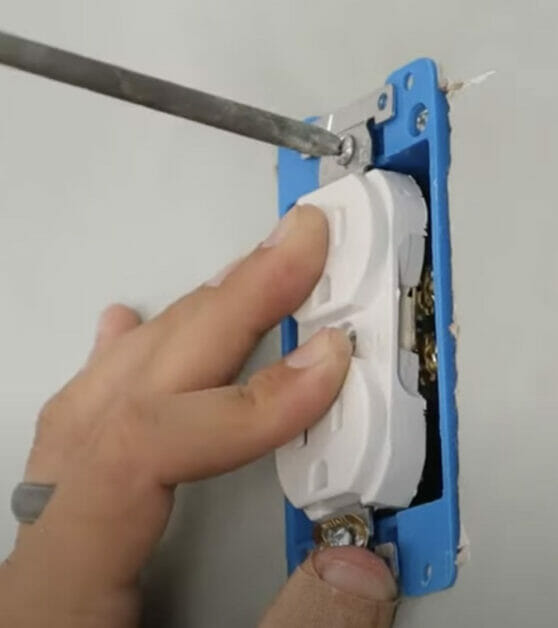
Step 8: Cover the Hole
After switching the power back on, the outlet in the new spot will be ready to use.
However, you will be left with a hole in the old spot, so you should do something about it.
I recommend that you repair the wall, but for a quick solution, you can put something like a painting in front of it.
How High Should an Outlet Be?
You usually move an outlet up because it’s too low for your needs.
How low is too low, and how high should an outlet be?
The NEC requires that an outlet should not be placed less than 18” from the floor. The absolute minimum is 12”, but it’s considered too low. Usually, you will see a floor outlet somewhere between 2’ and 4’ up. The ADA allows it to be slightly higher, up to 54”.
So 48” or 54” is the upper limit. But some rooms and outlets have other specifications.
These specifications exist for safety reasons and to standardize installations. They also take people’s reach into account.
References
Video References
Fort Knox Co
How To Home
